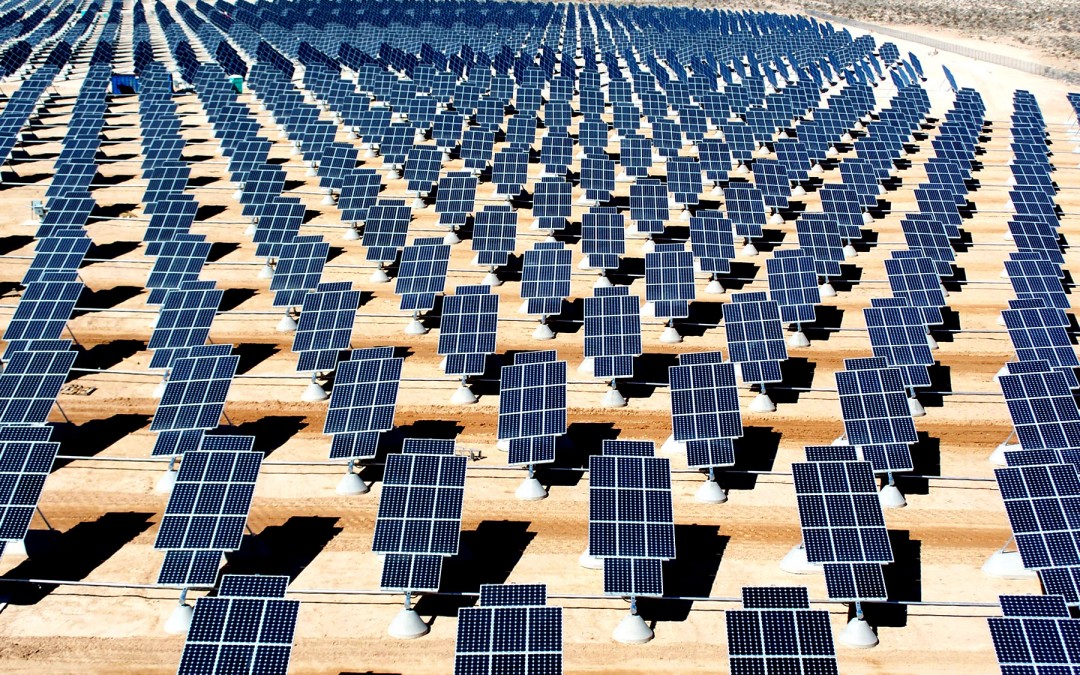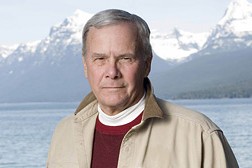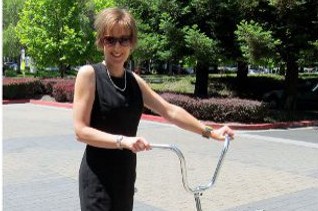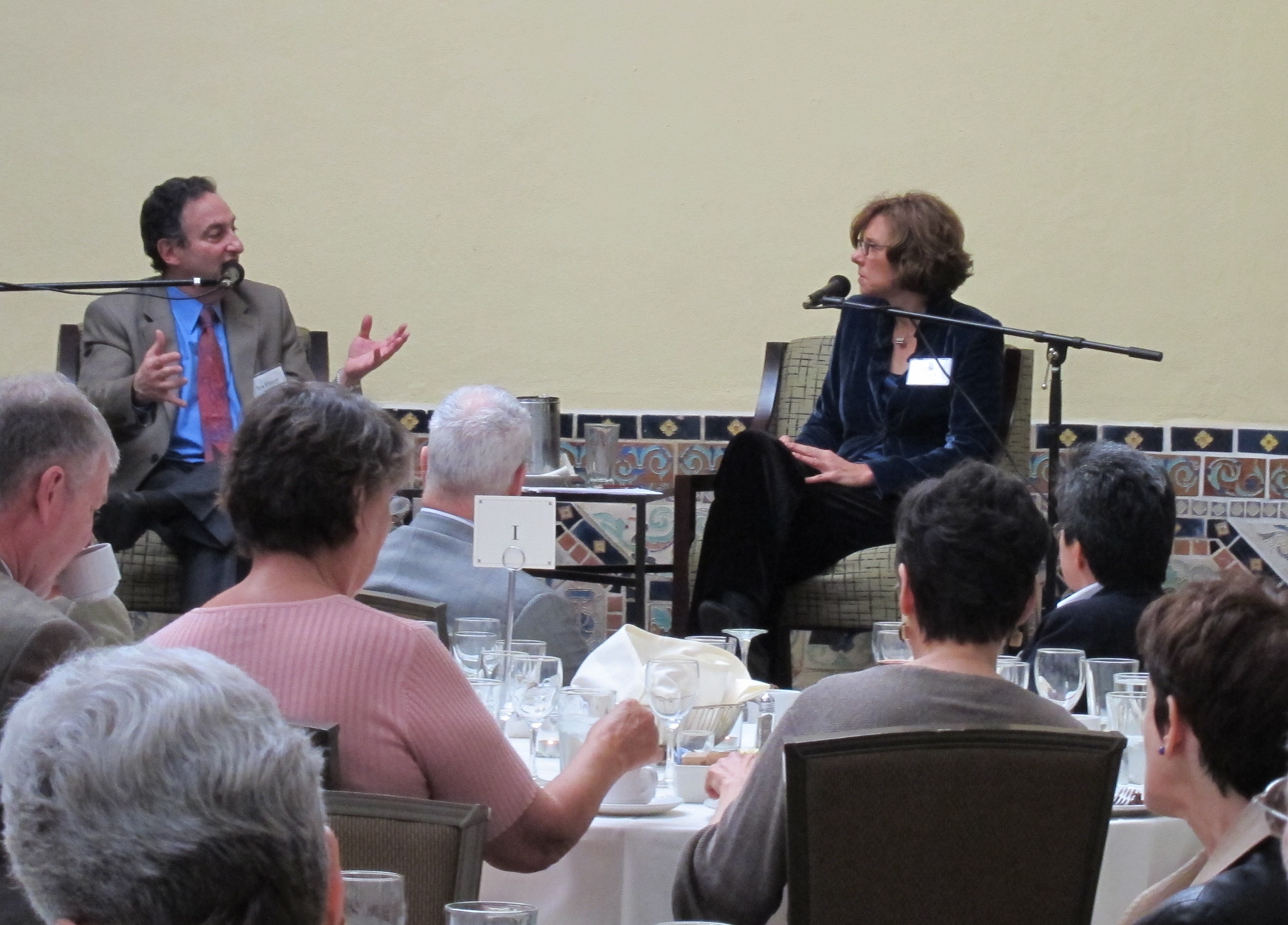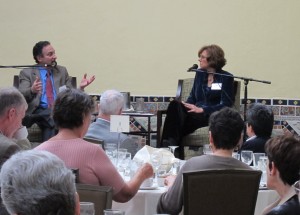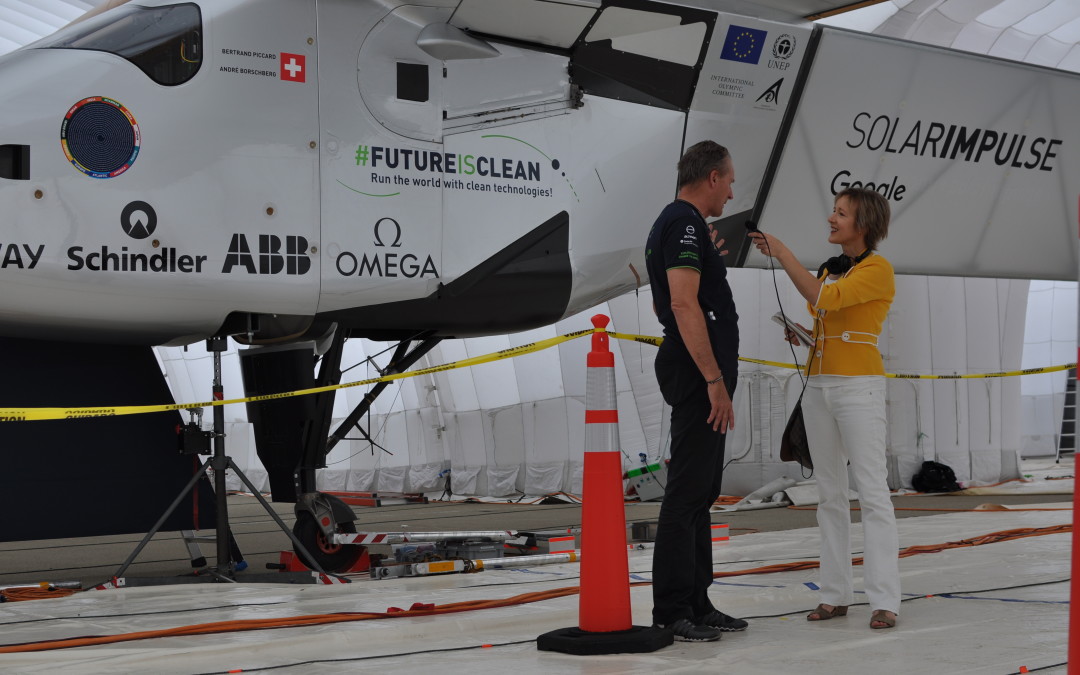
BBC Report: Solar Impulse Flight, A Kitty Hawk Moment For Clean Tech?
By Alison van Diggelen, host of Fresh Dialogues
On Thursday, May 12th at 3 am PST, the Solar Impulse plane leaves Phoenix, Arizona on the 11th leg of its journey, bound for Tulsa, Oklahoma. Solar Impulse is attempting to fly around the world, powered only by solar energy. It’s now completed over two-third of the epic journey. As well as breaking records for solar flight, this odyssey shines a spotlight on the many business opportunities that clean technologies offer.
Last month, Solar Impulse flew from Hawaii and arrived here in Silicon Valley. I interviewed both pilots at Moffett Field for a BBC World Service Report. Known as “ambassadors for a clean future,” they shared their vision for a cleaner, more efficient future:
“I never have enough of flying that plane…when you see those four electrical motors that put the plane in the sky with no noise, no pollution, it’s like a jump into the future. The world cannot continue on combustion engines, badly insulated houses, incandescent light bulbs, outdated systems to distribute the energy…this is last Century. You don’t have to be ecological anymore, just logical!” Bertrand Piccard
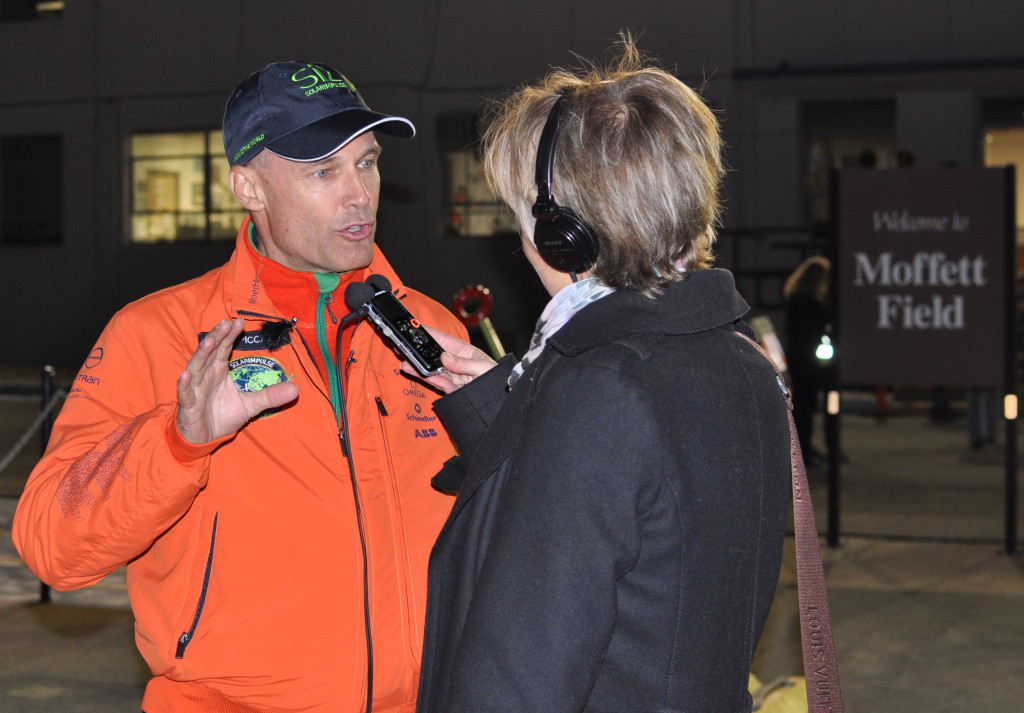 Piccard is Co-Pilot, Explorer and Solar Impulse Chairman. He’s also a psychiatrist, and a United Nations Environmental Program Goodwill Ambassador.
Piccard is Co-Pilot, Explorer and Solar Impulse Chairman. He’s also a psychiatrist, and a United Nations Environmental Program Goodwill Ambassador.
“We had to build an aircraft that was extremely energy efficient. It’s all about energy efficiency. This efficiency is extremely important on the ground as well. If we would use the technologies now on board this airplane, we could reduce our energy consumptions by at least 50%.” Andre Borschberg
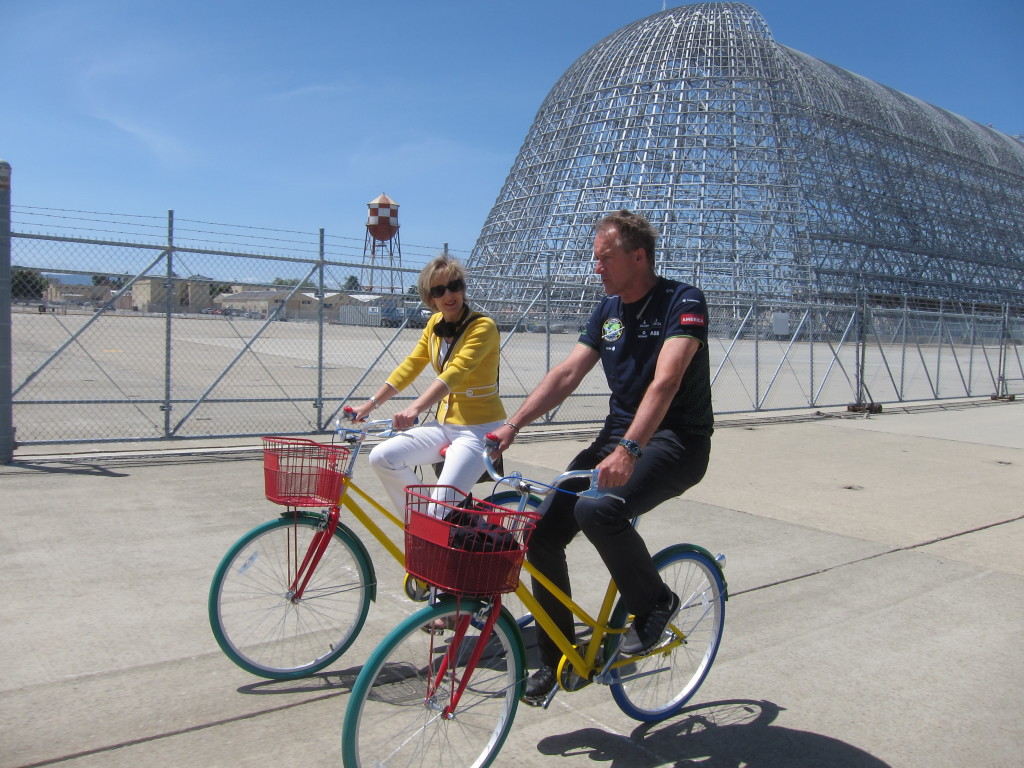 Andre Borchberg is Co-Pilot, MIT Engineer and Solar Impulse CEO
Andre Borchberg is Co-Pilot, MIT Engineer and Solar Impulse CEO
On May 10th, my report aired on the BBC World Service program, Business Matters and I was invited to share some more juicy details on the live show. My report was selected as a special Audio Clip: Listen here
Listen to the BBC podcast of the report and discussion here (May 9th podcast titled “Duterte Claims Victory” @26:50).
Here’s a transcript of the discussion (edited for length and clarity):
BBC Host, Fergus Nicoll: After an unexpected nine-month delay, a solar-powered aircraft aiming to complete a round-the-world voyage is back in business. Check out their website … it’s got a snappy update for you on the front page – “We are in Phoenix!” Alison has prepared a report for us – talking to the two pilots who’ve been steering this epic journey so far. – so Alison before we play in the piece, set the ground for us – where did you meet the team – what have they achieved so far – and why the big delay?
Alison van Diggelen: It’s a very interesting story, especially if you cover clean tech. Last Monday, I got up at 3 am to watch the Solar Impulse take off from Moffett Field here in SV, bound for Phoenix AZ. I talked with the two pilots who take turns on each flight. They’re attempting to fly around the world, powered entirely by solar energy. They left Abu Dhabi in March 2015, and are two-thirds of their way around.
Bertrand Piccard, one of the pilots told me: you don’t change the world with just an idealistic approach, you change the world if you have practical & profitable solutions. So they’re really pushing this clean energy, energy consumption message. They say we could reduce our energy consumption here by over 50% if we used the clean energy and energy efficiency techniques on that airplane. One of biggest potential business opportunities is solar powered airplanes replacing satellites in the sky…
BBC Report: Solar Impulse Plane Brings Clean Tech Message Around World
By Alison van Diggelen
Ambi on runway at Moffett Field, Silicon Valley
Elke Neumann : Clearance from the tower
Alison van Diggelen: The propellers are starting very slowly, but they’re about to take off…you can hear the propellers….It’s in the air…
Elke Neumann: It’s in the air. Woo hooo hooo!
Alison van Diggelen: All we can see is a line of lights in the sky and it looks like it’s barely moving, just floating there, about 1000 feet off the runway.
Last week, the Solar Impulse plane took off from Moffett Field in SV. Its mission is to fly around the world, powered only by solar energy. It’s now completed about 2/3rds of that journey, flying from Abu Dhabi across Asia to Hawaii last year. The team plans to reach NY by June and cross the Atlantic this summer.
The plane has the weight of a family car, but the wingspan of a 747, covered with 17,000 solar panels. I talked with Bertrand Piccard, a Swiss explorer and one of the two pilots who’s taking turns in the cockpit.
Bertrand Piccard: I never have enough of flying that plane…when you see those 4 electrical motors that put the plane in the sky with no noise, no pollution, it’s like a jump into the future. Thanks to new technologies, the future is already today.
Alison van Diggelen: What for you is the biggest game changer?
Bertrand Piccard: The world cannot continue on combustion engines, badly insulated houses, incandescent light bulbs, outdated systems to distribute the energy…this is last Century. It’s not only about protecting the environment, it’s a lot about making money, new industrial markets, economic development, profit, job creation. These clean techs can be used for electrical mobility, LED lights, smartgrids. It’s a complete demonstration of everything we need in our society…. Maybe Solar Impulse is a way to try to overcome the resistance of the dinosaurs who have not yet understood where the future is.
Bertrand Piccard: What do you say to these naysayers?
Bertrand Piccard: I tell them: be really careful because innovation does not come from inside the system. It’s not the people selling the candles who invented the lightbulb. What you’re doing now will be replaced. If you want to innovate be a pioneer… change your way of thinking. Dinosaurs disappear, they were the strongest one, but the less flexible one to adaptation.
Alison van Diggelen: Andre Borschberg, piloted the Japan to Hawaii flight, an epic 5 day, 5 night journey. He explains that Solar Impulse is like a “laboratory in the sky” and is excited about its multiple tech spinoffs.
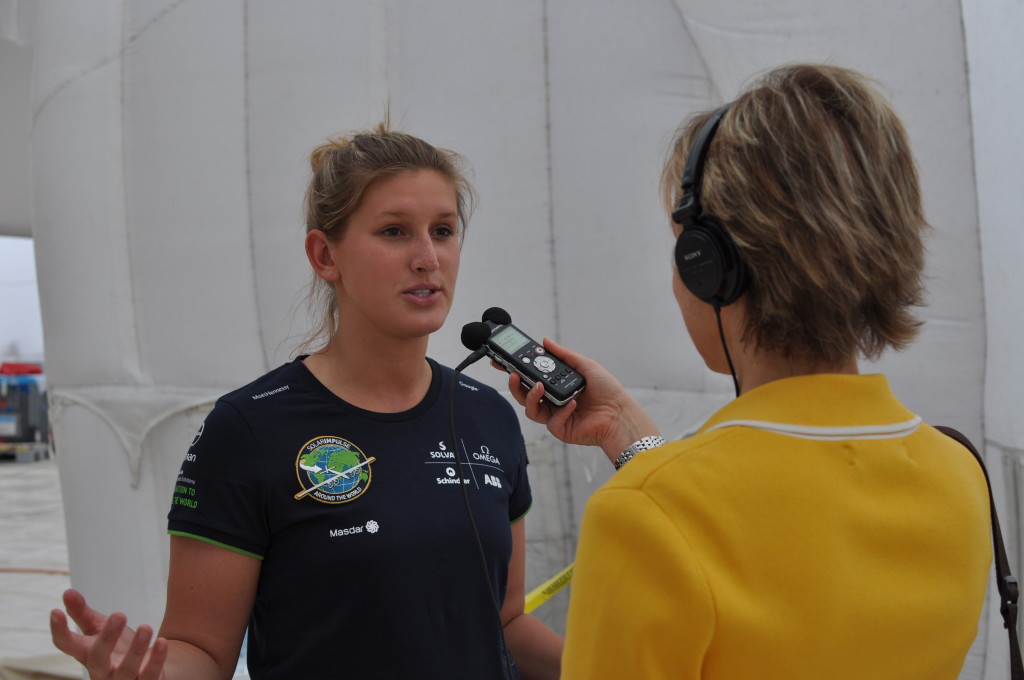
Paige Kassalen is part of the Solar Impulse ground crew and works for Covestro, one of the clean tech companies developing lightweight, high efficiency solutions for the “flying laboratory.”
Borschberg: What we have today is an airplane which can fly day and night, a week, a month, non stop …It’s totally sustainable in terms of energy, the limiting factor is the pilot… If we make it unmanned, an airplane can fly in stratosphere (above the bad weather) for 6 months, potentially replacing what satellites are doing, but cheaper in a flexible way…no pollution of space.
Alison van Diggelen: What made the journey even possible?
Andre Borschberg: We had to build an aircraft that was extremely energy efficient. This efficiency is extremely important on the ground as well. If we would use the technologies now on board this airplane, we could reduce our energy use by at least 50%. As it continues on its journey, the Solar Impulse team is striving to change the world, not just of aviation but of energy and communications too. You could call it a Kitty Hawk moment for the 21st Century.
Fergus Nicoll: I want to pick up on one or two of these ideas, the spinoff tech…start off with this amazing idea: the solar drones, solar powered unmanned vehicles in the stratosphere, a kind of neo-satellite…
Alison van Diggelen: That’s right. It was amazing to re-think satellites. Satellites cost up to $100M to produce, and then to launch them, it’s another $50M. So if you could do the same with a solar powered airplane, then there are huge cost savings available. Not only cost, but flexibility. These satellites go up for 7, maybe 15 years maximum, but two years into their journeys, the technology is old, whereas these solar powered airplanes could come down after six months and get repaired if necessary and get the latest technology fitted to them. So there’s all sorts of applications like GPS navigation, communications…observations: deforestation, climate change monitoring. They’ll probably have to make these solar airplanes even bigger to carry the massive payload.
Fergus Nicoll: Are other companies in Silicon Valley and elsewhere watching this…to see what they can spinoff themselves?
Alison van Diggelen: Yes, in fact the solar panels – the 17,000 panels – on the planes wings are made by a Silicon Valley company, and I know of at least one other Silicon Valley solar company that would rather be on the wings. So I think this whole project is a catalyst for companies to say: hey, we want to be the No. 1, the most lightweight, the most efficient solar panel. The “flying laboratory” is stimulating other companies because it’s shining a spotlight on these clean technologies.
Find out about more cutting edge technologies: Hyperloop seeking a Kitty Hawk Moment
More BBC Reports and BBC Dialogues on Tesla, Women in Tech, The US Election and much more…

